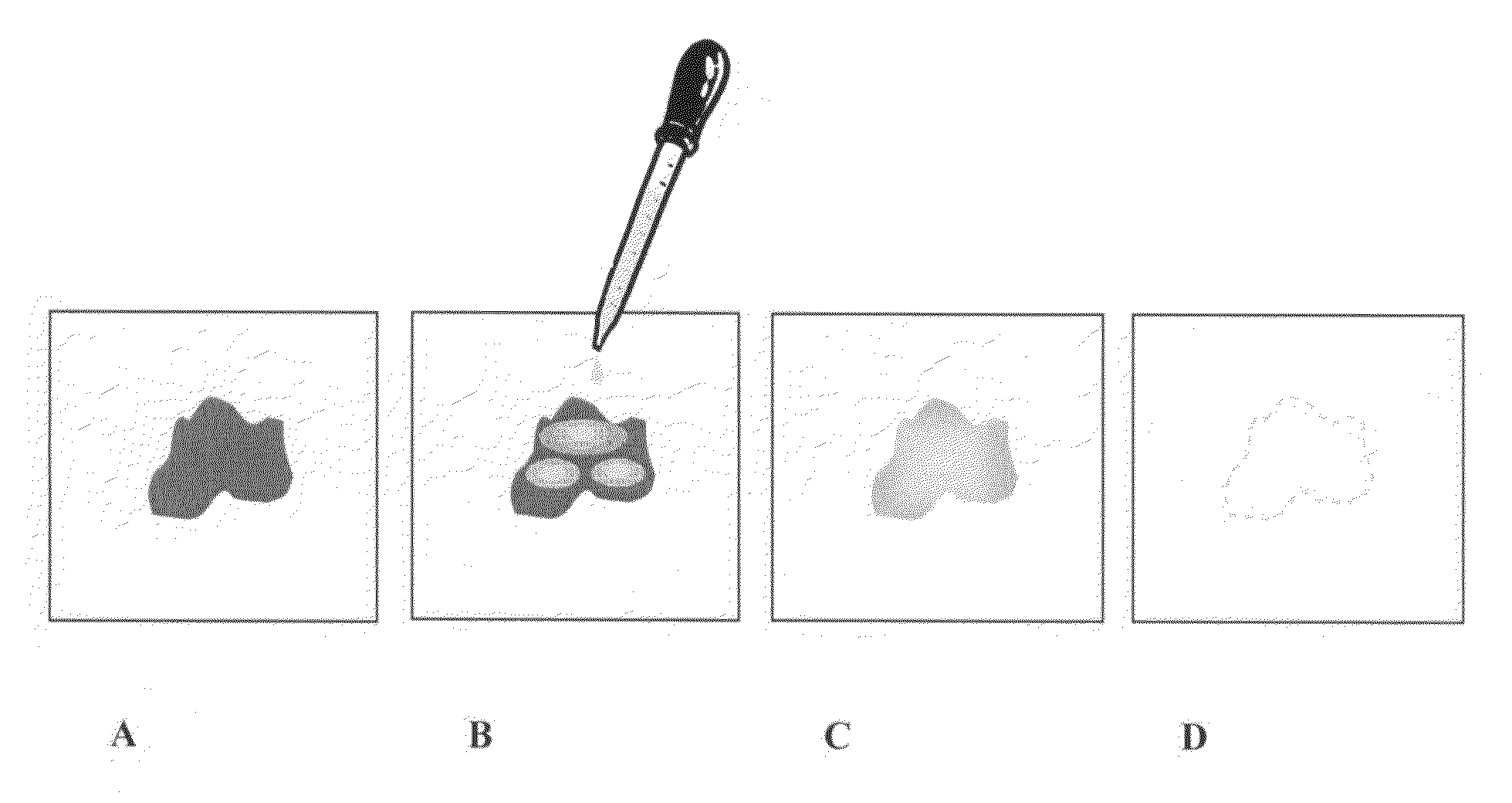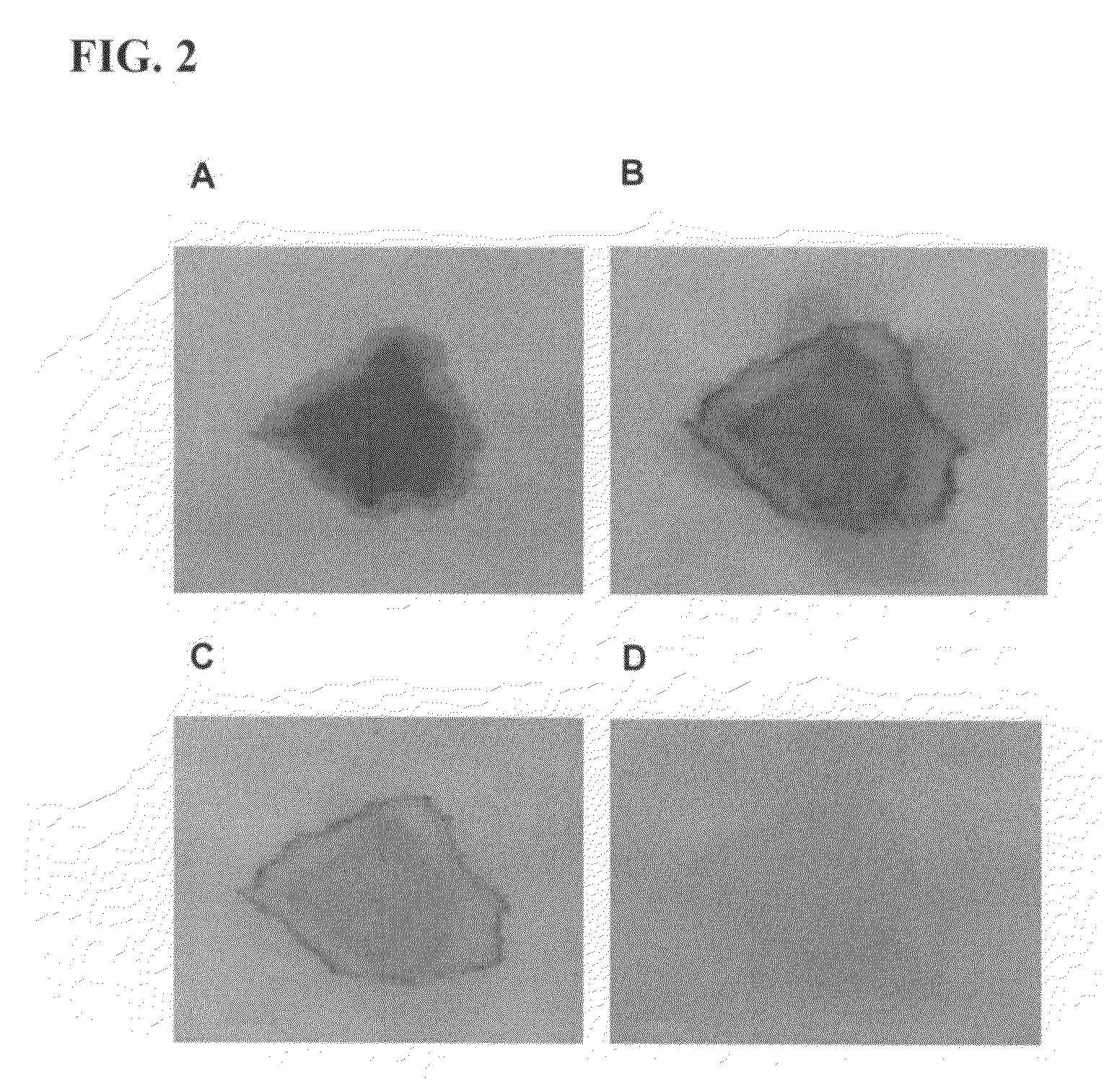Colorant neutralizer
a colorant and neutralizer technology, applied in the field of colorant neutralizers, can solve the problems of inconvenient use in various consumer products, the course of treatment can be truly a time-consuming process, and the stain color is almost impossible to remove, so as to reduce the overall time to discharge a colorant, slow down the stain erasing kinetics, and increase the overall time
- Summary
- Abstract
- Description
- Claims
- Application Information
AI Technical Summary
Benefits of technology
Problems solved by technology
Method used
Image
Examples
embodiments & products
VI. EMBODIMENTS & PRODUCTS
[0035]According to certain embodiments, we envision that various applications can be derived from the present technology. For instance, a major class of products or product concepts may include stain or colorant dischargers that erase or neutralize, for example, the color of blood on clothing textiles and other materials.
[0036]The composition can be embodied and / or delivered in a variety of the forms, such as an aerosol, a liquid, a gel, a paste, or a solid. When in a gel or solid form, the delivery media can be either shear thinning or temperature responsive, which becomes a liquid during application. A solid phase medium can also be activated by contacting said with water. The composition can be used on surfaces of fabrics, clothing, skin, fur, carpet, walls, enamel, glass, metal, or agar and growth media.
[0037]In another embodiment, we contemplate that the composition be used in a stain-fighting product. The stain-fighting product can comprise an aqueous...
example 1
Blood on Glass Slides
[0050]Microscope slides were coated with a mixture of linoleic acid, surfynol 465 and water (ratio 1:0.01:1) and spread out by the use of a glass rod. A drop of blood (human) was placed onto each slide and spread out with the glass rod. The control slide was prepared by simply spreading out the drop of blood. The slides were placed in an incubator at 37° C. for one hour. The blood color was fully discharged on the experimental slides while no change in color was observed with the control slides.
example 2
Blood on Feminine Pads
[0051]Four feminine pads were used in a study. Control 1 (C1) just had two drops of human blood placed on the center of the pad. Control 2 (C2) had a light coating of surfynol 465 in water (0.25 ml in 0.5 ml water) placed on the center of the pad followed by two drops of human blood. Experimental pad 1 (E1) had a mixture of linoleic acid and surfactant (0.25 ml surfactant and 0.50 ml of linoleic acid) followed by two drops of human blood. Experimental pad 2 (E2) had a mixture of linoleic acid and surfactant (0.50 ml of surfactant and 0.50 ml of linoleic acid) applied to the center of the pad followed by two drops of human blood. The pads were placed in an incubator at 37° C. and observed. Within minutes the red color of the blood on pads E1 and E2 had turned brown and continued to fade with time. At the end of the experiment the blood color on pads E1 and E2 had been fully discharged, leaving only a pale yellow tint. The blood color on the control pads remained...
PUM
| Property | Measurement | Unit |
|---|---|---|
| temperature | aaaaa | aaaaa |
| temperature | aaaaa | aaaaa |
| temperature | aaaaa | aaaaa |
Abstract
Description
Claims
Application Information
 Login to View More
Login to View More - R&D
- Intellectual Property
- Life Sciences
- Materials
- Tech Scout
- Unparalleled Data Quality
- Higher Quality Content
- 60% Fewer Hallucinations
Browse by: Latest US Patents, China's latest patents, Technical Efficacy Thesaurus, Application Domain, Technology Topic, Popular Technical Reports.
© 2025 PatSnap. All rights reserved.Legal|Privacy policy|Modern Slavery Act Transparency Statement|Sitemap|About US| Contact US: help@patsnap.com



